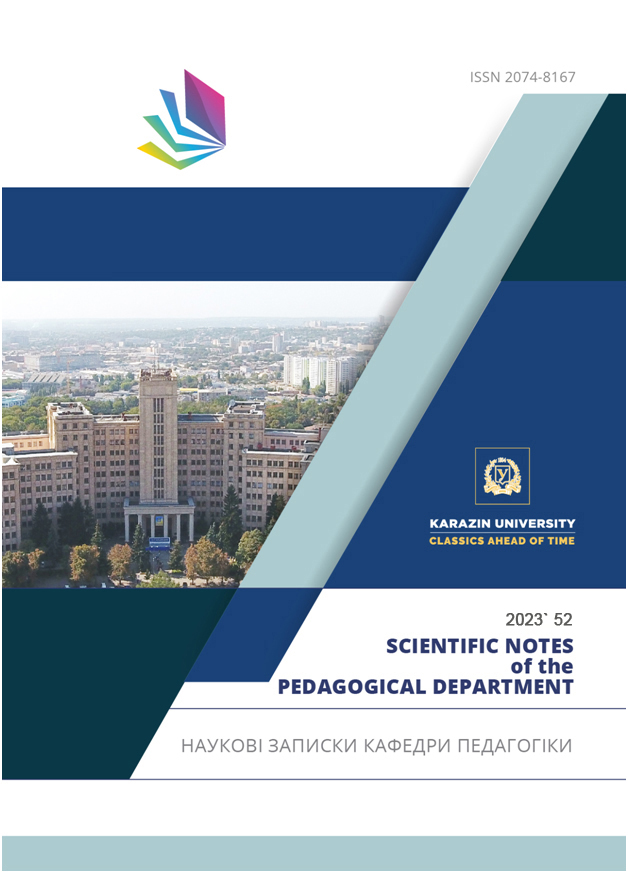Система освіти та ринок праці: питання взаємозалежності
Анотація
Ринок праці останнім часом зазнає суттєвих змін під впливом багатьох факторів. Серед них глобалізаційні, демографічні, міграційні процеси, міжнародні конфлікти та війни, зміна клімату, епідемії, пандемії тощо. Особливої актуальності набувають цифровізація та зелений транзит в усіх сферах життя. Це позначається на вимогах до знань і навичок працівників, які готуються до отримання або зміни робочих місць. Відтак, перед сферою освіти постає важливе завдання щодо запроваджен-
ня гнучких і ефективних навчальних програм.
Мета статті. Узагальнення статистично-аналітичної інформації та прогнозів щодо змін в освіті в європейських країнах та Україні в контексті трансформації ринків праці та під впливом розгортання Індустрії 4.0.
Основні результати дослідження. В статті зазначене зростання рівня безробіття серед молоді на європейському континенті, яке почалося на початку 1960-х рр. Наведена статистика щодо освіти та рівня безробіття в Україні, збитки від війни, що була розв’язана Росією у 2022 р. Особливо підкреслена зростаюча роль закладів професійної освіти і тренінгу у загальній системі освіти країн світу, розмиття кордонів між середньою спеціальною та вищою освітами. В освіти виокремлені дві головні
тенденції: розвиток інформаційно-комунікативних технологій та підвищення ролі трансверсальних навичок. Наведена статистика щодо рівня базових цифрових навичок серед громадян країн-членів ЄС та ініціативи щодо підвищення цифрової грамотності європейців. Підкреслена наявність різних підходів щодо співвідношення загальнотеоретичних та професійних дисциплін у різних національних системах освіти.
Висновки. До кінця не визначеним залишається вплив на сферу освіти і ринок праці процесів автоматизації, роботизації, переходу до зеленої економіки. Зазначена перспективність запровадження інтегрованих підходів в освіті на кшталт німецьких «полей навчання» (Lernfelder) або професійного "коду" у фінській системі.
фесійного «коду» у фінській системі.
Завантаження
Посилання
Lugovyi, V.I. (2020). The current state of higher education in Ukraine: problems, reasons, prospects. Bulletin of NAPNU, 2(2). URL: https://doi.org/10.37472/2707-305X-2020-2-2-11-2 (Last accessed: 04.10.2022) [in Ukrainian].
Mospan, N. (2018). Higher education and the labor market of the European Union: trends interaction: edited by S.O. Sysoeva K.: VP «Edelweiss». 392 p. [in Ukrainian].
Khomenko, M. (2021) M. Khomenko: the labor market and the market of educational services. Osvita.ua 09/14/2021. URL: https://osvita.ua/blogs/84239/ (Date of access: 04/12/2023) (Last accessed: 12.04.2023) [in Ukrainian].
Binder, K. (2023) Progress on the European Commission’s 2021-2027 digital education action plan. EPRS European Parliamentary Research Service. March 2023. URL.: https://www.europarl.europa.eu/RegData/etudes/BRIE/2023/745689/EPRS_BRI(2023)745689_EN.pdf (Last accessed: 25.03.2023).
Cedefop (2022). The future of vocational education and training in Europe. Volume 1: the changing content and profile of VET: epistemological challenges and opportunities. Luxembourg: Publications Office of the European Union. Cedefop research paper; No 83. 132 pp. URL: http://data.europa.eu/doi/10.2801/215705 (Last accessed: 05.04.2023).
Cedefop (2022). The future of vocational education and training in Europe. Volume 2: delivering IVET: institutional diversification and/or expansion? Luxembourg: Publications Office. Cedefop research paper, No 84.114 pp. URL: http://data.europa.eu/doi/10.2801/780431 (Last accessed: 11.04.2023).
Cedefop (2004). Towards a history of vocational education and training (VET) in Europe in a comparative perspective. Vol. 2. Luxembourg: Office for Official Publications of the European Union, 109 pp. URL.: https://www.cedefop.europa.eu/files/5153_2_en.pdf (Last accessed: 10.04.2023).
Council of the European Union (2018). Council Recommendation of 22 May 2018 on key competences for lifelong learning (Text with EEA relevance) (2018/C 189/01) URL.: https://eur-lex.europa.eu/legal-content/EN/TXT/PDF/?uri=CELEX:32018H0604(01)&rid=7 (Last accessed: 23.03.2023).
European Commission (2020). Communication from the Commission to the European Parliament, the Council, the European Economic and Social Committee and the Committee of the Regions. Digital Education Action Plan 2021-2027 Resetting education and training for the digital age. {SWD (2020) 209 final}. Brussels, 30.9.2020 COM (2020) 624 final. URL: https://eur-lex.europa.eu/legal-content/EN/TXT/PDF/?uri=CELEX:52020DC0624&from=EN (Last accessed: 05.04.2023).
European Commission (2010). Europe 2020: a strategy for smart, sustainable and inclusive growth. COM (2010) 2020 final. Brussels. 35 pp. URL: https://eurlex.europa.eu/LexUriServ/LexUriServ.do?uri=COM:2010:2020:FIN:EN:PDF (Last accessed: 03.04.2023).
European Commission (1994). Growth, competitiveness, employment: the challenges and the ways forward into the 21st century. COM (93) 700. Luxembourg: Office for Official Publications of the European Communities.167 pp. URL: https://op.europa.eu/en/publication-detail/-/publication/4e6ecfb6-471e-4108-9c7d-90cb1c3096af/language-en (Last accessed: 02.04.2023).
European Council conclusions, 23-24 June 2022. URL: https://www.consilium.europa.eu/media/57442/2022-06-2324-euco-conclusions-en.pdf (Last accessed: 04.04.2023).
Eurostat (9 March 2023). Annual inflation more than tripled in the EU in 2022. URL: https://ec.europa.eu/eurostat/web/products-eurostat-news/w/ddn-20230309-2 (Last accessed: 12.04.2023).
Eurostat (31 March 2023). Euro area unemployment at 6.6%. URL: https://ec.europa.eu/eurostat/documents/2995521/16324762/3-31032023-BP-EN.pdf/4cb7a93a-bb55-923d-ec95-5fcb8073271c (Last accessed: 15.04.2023).
Eurostat (7 March 2023). Share of individuals having at least basic digital skills, by sex. URL: https://ec.europa.eu/eurostat/databrowser/view/SDG_04_70__custom_4713299/default/table?lang=en (Last accessed: 05.04.2023).
ILO (March 2023). World Employment and Social Outlook 2023: The value of essential work URL: https://www.ilo.org/digitalguides/en-gb/story/weso2023-key-workers#chapter1-definition (Last accessed: 09.04.2023).
Markowitsch, J., Hefler, G. (2019). Future Developments in Vocational Education and Training in Europe: Report on reskilling and upskilling through formal and vocational education training, Seville: European Commission, JRC 117691. 24 pp.
Ministry of Education and Science of Ukraine (2023). Overview of the current state of education and science in Ukraine in terms of russian aggression (as of January 2023). URL: https://reliefweb.int/report/ukraine/overview-current-state-education-and-science-ukraine-terms-russian-aggression-january-2023-enuk (Last accessed: 12.04.2023).
Pouliakas, K. (2018). Determinants of automation risk in the EU labour market: a skills-needs approach. IZA Discussion Paper, No 11829. 28 pp. URL.: https://www.iza.org/publications/dp/11829/determinants-ofautomation-riskin-the-eu-labour-market-a-skills-needs-approach (Last accessed: 03.04.2023).
These professions are in the highest growing demand in Europe (4 April 2023). The Brussels Times. 4 April 2023. URL: https://www.brusselstimes.com/440849/these-professions-are-in-the-highest-growing-demandin-europe (Last accessed: 17.04.2023).

